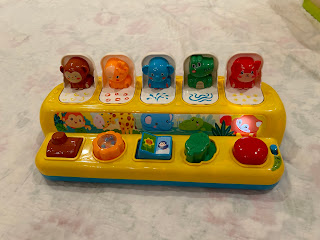This DIY clothespin activity strengthens the hands and fingers, which improves fine motor skills and helps with handwriting and other manipulative tasks. You can vary the activity to work on matching colors, recognizing numbers, and counting!
You Will Need:A paper plate or poster board cut into a circle
Different colors of Sharpie markers
Different colors of stickers
Clothespins
Place colored stickers on the clothespins and the paint stirrer. Use a Sharpie to write/draw shapes, numbers, math symbols and letters on the clothespins and paper plate. Activity Instructions:
Work on matching and placing the corresponding clothespins to the sticker colors and numbers. Instruct the child can alternate hands when placing and squeezing the clothespins.
If the child can't differentiate colors/numbers, etc. you can help them identify which one to match. Position the circle to encourage crossing the midline.










